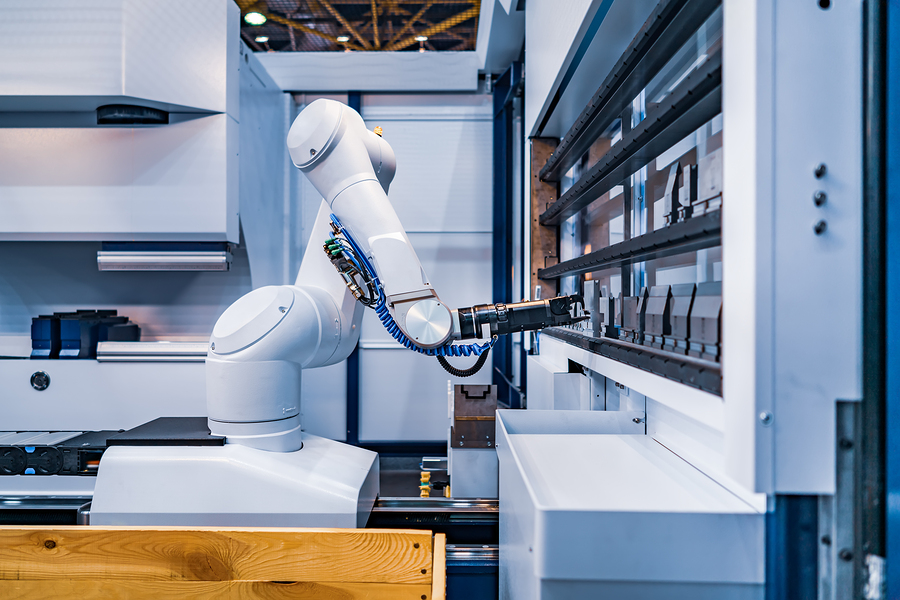The fear of machines replacing humans will become a reality much sooner than people imagine.
Photo: Bigstock
A study from the World Economic Forum prognosticates that 52% of work tasks will be performed by machines by 2025, compared with only 29% today.
The report also forecast that, by 2022, the replacement of 75 million jobs will occur, a worrying number if the projected creation of 133 million, a total of 58 million new net jobs, is not taken into consideration.
The most alarming part is not the number of jobs lost or emerging, or the percentage of machines doing individual work tasks, but the need for employees to reskill. 54% of jobs will require that the employees reeducate to take full advantage of the growth opportunities offered by the Fourth Industrial Revolution.
How do companies prepare for the challenges of the future?
It is necessary to hire new full-time staff to face the challenges presented by the machines and algorithms. The employees need the essential abilities to handle new technologies, automate tasks entirely and reskill existing employees.
Nearly 50% of companies expect their full-time workforce to decrease by 2022 due to automation, and almost 40% expect to expand their staff and only a quarter expect that the technology will create new jobs in their companies.
Still, more than half of the companies plan to only reform employees in critical positions and just a third plan to prepare workers at risk of losing their jobs, which jeopardizes the opportunity for many to keep their job or get a new one if they do not make themselves.
To help employees to renew themselves, 85% of the companies plan to depend on specific internal departments, half think of supporting public education and only 34% plan to directly train employees and give them a recognized accreditation even outside the company.
The future of the workforce
All industries will have skill gaps, so coordination among all is needed: companies, government, employees and other stakeholders to create a new vision of the labor market.
The public sector has the most urgent need to face the impact of technology through a restructuring of the educational system to one aimed at improving soft skills. It also needs to support social policies aimed at creating a lifelong learning ecosystem for students and employees, and stimulate job creation according to local and global demand.
Industries should stimulate the training of their current employees against the new and more demanding roles as the competition for skilled talents intensifies.
For workers, it is necessary to take personal responsibility for their learning trajectory through the development of a higher degree of comfort with the concept of lifelong learning.
Skills Perspective for 2022
Growing
-
Analytical thinking and innovation
-
Active learning and learning strategies
-
Creatively, originality and initiative
-
Technology design and programming
-
Critical Thinking and analysis
-
Complex problem-solving
-
Leadership and social influence
-
Emotional Intelligence
-
Reasoning, problem-solving and ideation
-
System analysis and evaluation
Declining
-
Manual dexterity, endurance and precision
-
Memory, verbal, auditory and spatial abilities
-
Management of financial, material resources
-
Technology installation and maintenance
-
Reading, writing, math and active listening
-
Management of personnel
-
Quality control and safety awareness
-
Coordination and time management
-
Visual, auditory and speech abilities
-
Technology use, monitoring and control.
Job outlook 2022
Emerging
-
Data analyst and scientists
-
AI and machine learning specialists
-
General and operations managers
-
software and applications developers and analysts
-
sales and marketing professionals
-
big data specialists
-
digital transformation specialist
-
new technology specialists
-
Organisational development specialists
-
Information technology service
Declining
-
Data entry clerks
-
accounting bookkeeping and payroll clerks
-
Administrative and Executive secretaries
-
Assembly and factory workers
-
client information and customer service workers
-
business service and administration managers
-
accountants and auditors
-
Material-recording and stock-keeping clerks
-
General and operations managers
-
Postal service charts
This article from Observatory of the Institute for the Future of Education may be shared under the terms of the license CC BY-NC-SA 4.0 
)
)











)
Sofía García-Bullé
Sofía García-Bullé
Sofía García-Bullé